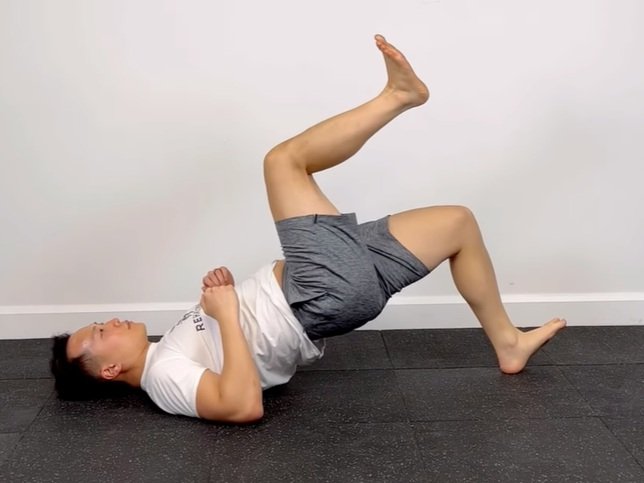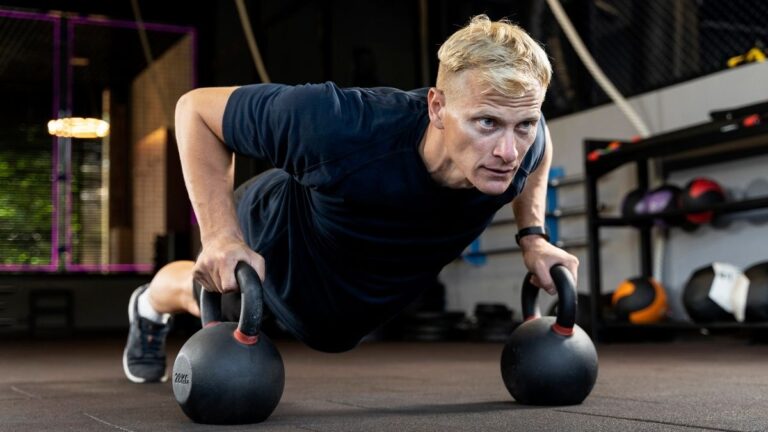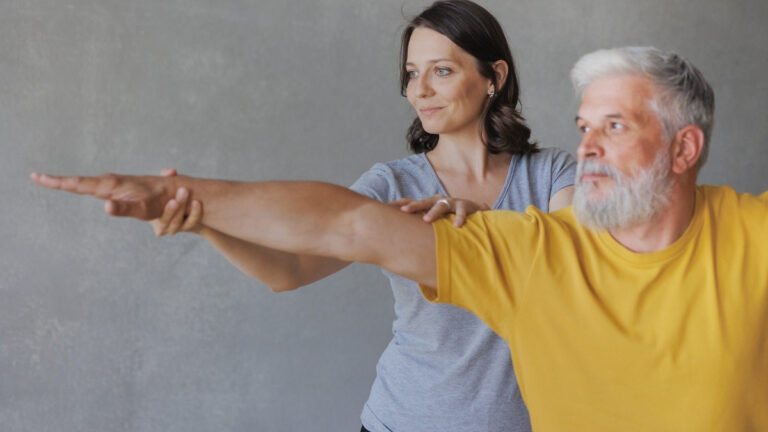Tired of Aching at Your Desk? 6 Quick Moves to Actually Strengthen Your Deep Core (Bye, Back Pain!)
Struggling with nagging back pain from hours at your desk? That constant ache might be a sign your core needs attention. Weak deep core muscles can lead to poor posture and discomfort.
The good news? A personal trainer suggests six targeted exercises that can ease the strain and build lasting strength.
These simple yet effective moves will help you stand taller, feel stronger, and keep back pain at bay. Say goodbye to that daily discomfort and hello to a more supported spine.
1. Pelvic Tilt
The pelvic tilt exercise is a simple yet effective way to enhance lower back flexibility and activate core muscles.
By lying on your back and gently tilting your pelvis upward, you reduce lower back tension while strengthening the abdominal muscles.
Consistent practice can alleviate discomfort and improve spinal alignment.
Tips:
- Perform the movement slowly to avoid engaging the wrong muscles.
- Focus on a subtle tilt without forcing the motion.
- Perform 10–12 repetitions for gentle activation.
- Breathe deeply to support core engagement.
- Maintain a flat back against the floor as you tilt.
2. Dead Bug
Dead bugs are excellent for strengthening the deep core muscles while reinforcing coordination and stability.
By lying on your back and alternating arm and leg movements, you challenge your core without putting pressure on your spine.
This makes it an excellent option for those recovering from back pain or looking to build a stronger core.
Tips:
- Keep your lower back pressed into the floor to prevent arching.
- Move slowly and deliberately to maximize muscle activation.
- Perform 8–12 repetitions per side.
- Engage your core throughout the exercise for stability.
- If you experience strain, reduce your range of motion.
3. Bridge with Core Activation
Bridge exercises with core activation are a staple for improving glute strength and core control.
By lifting your hips while maintaining core engagement, you train both the posterior chain and the abdominal muscles.
This movement can also help reduce lower back discomfort and improve hip mobility.
Tips:
- Keep your knees aligned with your hips to prevent strain.
- Squeeze your glutes at the top for better muscle activation.
- Hold the bridge for 3–5 seconds before lowering.
- Perform 10–12 repetitions.
- Avoid arching your lower back by focusing on core activation.
4. Standing Pelvic Clock
Standing pelvic clock exercises promote mobility and core strength while enhancing body awareness.
This exercise involves imagining your pelvis as the center of a clock, tilting it forward, backward, left, and right.
By practicing slow, controlled movements, you can alleviate stiffness caused by prolonged sitting and encourage better pelvic alignment. Regular practice can also improve balance and coordination.
Tips:
- Maintain a neutral spine throughout the movement.
- Engage your core to control the tilts, avoiding excessive lower back arching.
- Perform 5–8 circles in both directions for maximum benefit.
- Keep your knees slightly bent and relaxed.
- Focus on slow, intentional movements to prevent strain.
5. Side-Lying Dead Bug (Anti-Rotation Focus)
This variation of the dead bug exercise challenges core stability in a lateral position. By extending your arm and leg while keeping your torso stable, you activate the obliques and transverse abdominis.

It’s particularly beneficial for reducing compensatory movements in the lower back.
This movement also builds anti-rotation strength, which is essential for daily activities and sports performance.
Tips:
- Start with a smaller range of motion if your hips shift.
- Keep your breathing steady to maintain core engagement.
- Perform 8–10 repetitions on each side.
- Keep your spine neutral to prevent discomfort.
- Track your progress by noting improvements in balance and control.
Related Article:
6. Single-Leg Marching Bridge
The single-leg marching bridge builds glute and hamstring strength while enhancing core stability.
By maintaining a lifted bridge position and performing controlled leg lifts, you engage multiple muscle groups.
This exercise is particularly useful for correcting muscular imbalances and developing pelvic control, making it a valuable addition to any core routine.
Tips:
- Keep your hips level while marching to prevent asymmetry.
- Engage your core and avoid arching your lower back.
- Perform 8–10 reps on each leg, holding for 2–3 seconds per lift.
- Press your feet firmly into the ground for stability.
- Adjust the height of your bridge if needed to reduce strain.
Final Thoughts
Incorporating these core exercises into your routine can significantly enhance strength, stability, and mobility. Consistency is key, so aim to practice them 3–4 times per week.
Focus on maintaining proper form and breathing steadily throughout each movement.
Adjust the intensity as needed to match your fitness level. With time, you’ll notice improved posture, reduced back discomfort, and greater overall body control.
Suggested Core Routine
To get started, follow this simple routine:
- Standing Pelvic Clock: 5–8 circles in each direction
- Side-Lying Dead Bug: 8–10 reps per side
- Single-Leg Marching Bridge: 8–10 reps per leg
- Pelvic Tilt: 10–12 repetitions
- Dead Bug: 8–12 repetitions per side
- Bridge with Core Activation: 10–12 repetitions
Perform 2–3 rounds, depending on your fitness level. Rest for 30–60 seconds between exercises. Stay consistent, and adjust as needed for continued progress.









